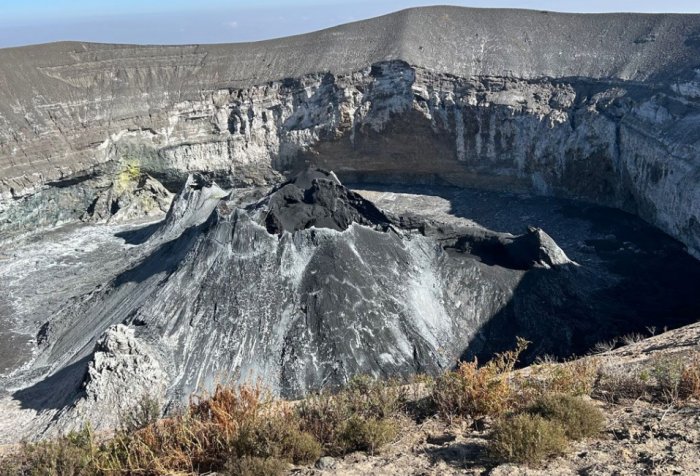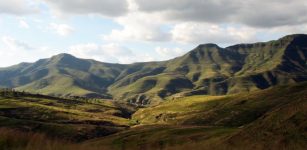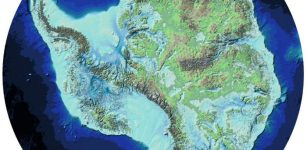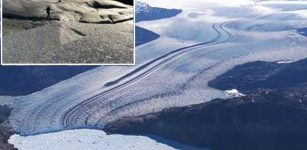Rapid Uplift At Unique Volcano In Tanzania – Detected
Eddie Gonzales Jr. – MessageToEagle.com – When a volcano is about to erupt, the surrounding land puffs up like a squeezed balloon.
The technical term is “transient deformation,” and Virginia Tech researchers have detected and tracked this short-lived movement for the first time using satellite observations of Ol Doinyo Lengai, an active Tanzanian volcano.
Ol Doinyo Lengai is an active Tanzanian volcano that erupts a highly fluid lava, which looks like black oil or brown foam. When it cools, the lava turns white. Photo courtesy of D. Sarah Stamps.
According to the study, increasing pressure inside a volcano’s magma reservoir can cause the land to bulge. When the pressure decreases, the reservoir deflates again and the land falls back.
“We have been able to detect transient motion in volcanic activity, and this is a precursor for any kind of eruption,” Ntambila Daud, a graduate student working with Associate Professor D. Sarah Stamps at Virginia Tech’s Geodesy and Tectonophysics Laboratory, said in a press release.
“This research could help Tanzanian authorities have a better idea of what is happening with the volcano.”
Tanzania’s Ol Doinyo Lengai—a name that means “mountain of God” in the Maasai language—is the only active volcano in the world that produces carbonatite lava, which has unusual coloring: erupting black or gray but cooling to a bone white. Eruptions represent a constant threat to surrounding communities and compromise tourism and air traffic in the area.
Records of Ol Doinyo Lengai eruptions go back to the 1880s. Since then, the volcano has been periodically active. Observations were spotty until 2016, when the Virginia Tech team installed six sensors on the flanks of the volcano to collect high-precision geodetic data taken from Global Navigation Satellite Systems (GNSS). That data and data products allow a researcher to measure and better understand Earth’s geometric shape. In addition, an on-site seismometer monitors localized shaking and swelling around the volcano.
Using the GNSS data streams, Daud created computer models that detect potential volcanic signals at Ol Doinyo Lengai due to magma reservoir changes. The team assessed seven years of continuous GNSS data for transient signals and found rapid uplift spanning March 2022–December 2022 and then steady-state uplift through August 2023.
“If the difference between the data and the expected pattern is three times larger, it indicates transient deformation in surface motion,” Daud said. “This could signal an impending eruption and aid in eruption forecasting.”
In addition to serving as a potential early-alert system for the communities surrounding Ol Doinyo Lengai, this technique has been applied to other volcanoes such as Long Valley Caldera in California and Alaska’s Akutan volcano.
“The approach that Daud used in this paper provided important steps forward in our understanding of the dynamic magma plumbing system of Ol Doinyo Lengai,” Stamps said.
Their results appeared in a paper published earlier this summer in Geophysical Research Letters.
Written by Eddie Gonzales Jr. – MessageToEagle.com Staff Writer











